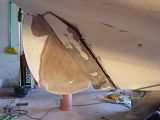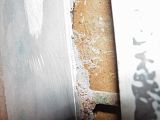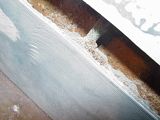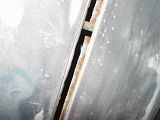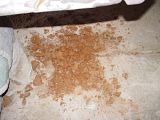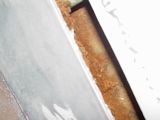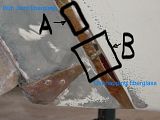Mark Yashinsky wrote:just wondering, but the failure area is really in the fairing of the keel and not the rudder, correct??? Seems like this fairing was "added on", given the outline that Jerry shows in his photos (previous repair???). Would have thought that the whole keel would be one big fiberglass job and not have a separate area, leading to the rudder. Just wondering...
Hi Mark,
Yes, the failure is in the joint between the two sections of the keel. It has nothing to do with the rudder. However, the effect of the rudder is transmitted to the rest of the vessel through this aft section of the keel.
On my Ty, this aft keel section is 6" wide. It was added on when it was constructed. I can't say if the newer models have this keel section added on, but that was the way the earlier models of CDs were built.
This keel joint problem was discussed on the board about three weeks ago. Fred B's post shed some light on the subject. To review it click "Search".
Next, type in "Typhoon chainplate and rudder repair advice requested". This was posted by Jerry S. on 4/10/05.
Fred B (fenixrises) explains the process of molding and stripping the early hulls. It isn't a repair but a method that shipbuilders used in forming hulls.
Best regards,
O J
